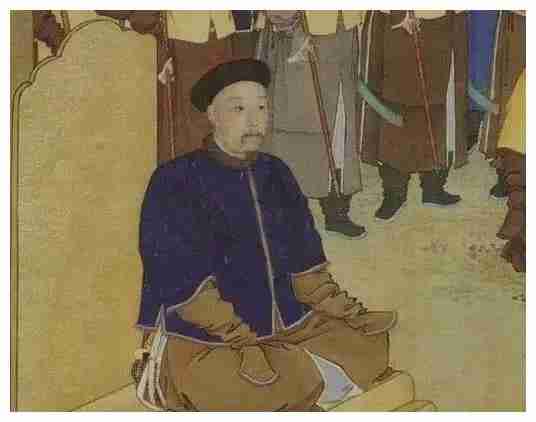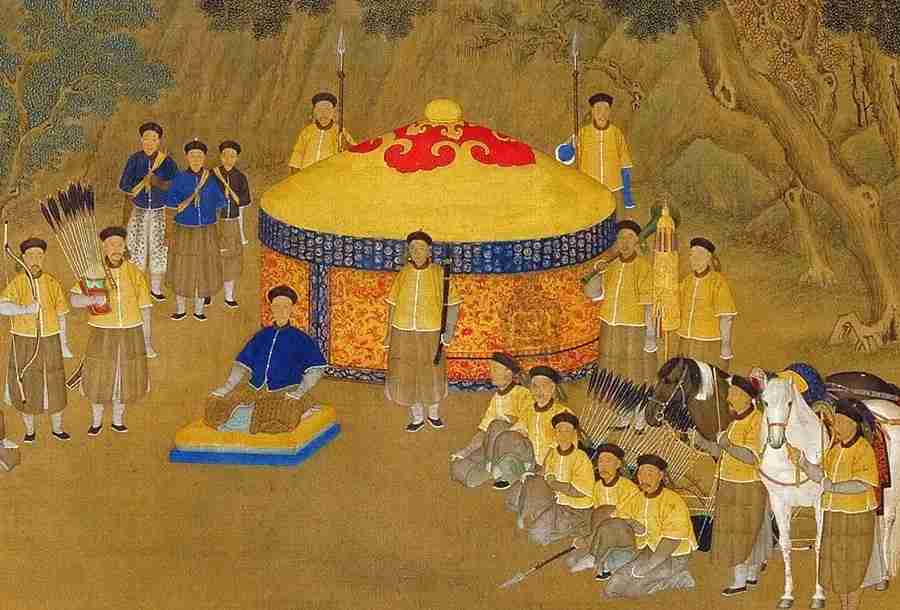If you know Chinese history, you will likely know of the Qing Dynasty and various rulers that were part of its 268-year history. In particular, two monarchs are the most notable figures of its era and set the course of Qing history and modern China: Emperor Kangxi (whose reign lasted from 1662 to 1722) and Emperor Qianlong (whose reign lasted from 1736 to 1796) – our subject for this article.
What was Emperor Qianlong known for?

By the time the Qianlong Emperor came to power, Qing China was at its height of prosperity and splendor due to its booming economy and large population. He was a cultured and capable ruler, who led various military campaigns to expand the empire’s territory. However, in his later years, his government became wasteful and corrupt, which resulted in a stagnating society and accelerated the end of the Empire.
As a child, he was loved by both his father and grandfather, and he possessed literary abilities and a strong interest in martial arts in his teens.
When was Qianlong born and died?
The Qianlong Emperor, whose name was Hongli, was born on 25th September 1711 and died on 7th February 1799. He was the fourth Qing emperor to rule over unified China, the sixth emperor from the Qing dynasty, the grandson of Emperor Kangxi, and the fourth son of the Yongzheng Emperor.
How did emperor Qianlong die?
By the time that the emperor died in 1799, he was quite old and infirm, with the cause of his death being stated as severe cold.
How long did Qianlong rule?
The Emperor’s rule was foreseen before his official proclamation as emperor, as he was the favorite grandson of the Kangxi Emperor and the favorite son of the Yongzheng Emperor. For instance, he was entrusted with various important rituals while he was a prince, and he started his involvement in military strategy decisions thanks to encouragement from his father.
After 1722 when his father took over the throne, he was made a first-rank prince or a qinwang, and later joined the succession battle against two people: his uncle Yunsi, and his elder half-brother Hongshi. As his father did not want a violent succession battle from happening, he wrote his chosen successor on a sealed paper and placed it in a special box that was sealed and placed in Qianqing Palace.
He also stated that the content on the paper would only be revealed after his death, and only in the presence of the members of the Imperial family and senior ministers in the court. In 1735, the Yongzheng Emperor died suddenly, and his will was revealed to the Qing court, which allowed Hongli to take over and receive the name ‘Qianlong’ which means ‘Lasting Eminence’.
The Qianlong Emperor ruled for 60 years and stepped down in favor of the Jiaqing Emperor to maintain filial piety to his grandfather, Emperor Kangxi, who ruled for 61 years. Although this was the case, he still held the position of Retired Emperor until 1799, when he died at 87 – landing him among the longest-reigning monarchs in world history.
Emperor Qianlong accomplishments

- The emperor was famous for his military leadership, which he started immediately after taking over his father. During his coronation, the Miao rebellion was occurring in southwest China, and he sent his armies to suppress it. Afterward, he expanded the empire’s territory – both through military strength and by taking advantage of the weaknesses and disunity among Inner Asian people.
- Xinjiang Province was created during his rule when he incorporated the Dzungar Khanate into his empire. Additionally, he garrisoned Ili, a province in the west, and ordered the Dzungar genocide to deal with the remaining resistance from the Mongol tribes in the area.
- His expansion campaigns also added other ethnicities to Qing China, including Evenks, Uyghurs, Kyrgyzs, and Kazakhs, and eventually took parts of Central Asia, Korea, and parts of Southeast Asia. All of these campaigns were expensive and drained the treasury significantly, which eventually weakened the Qing army in his later years.
- His role in spreading culture involved preserving Manchu customs, language, and rituals; he even gave a secret order to compile the Shamanic Code in 1747.
- He also ordered a replica of the Putuo Zongcheng Temple, which was the Tibetan Potala Palace, to be built in his imperial summer palace.
- He commissioned a sacred painting of himself as Manjushuri to present himself to Mongols and Tibetans in Buddhist terms.
- His knowledge and passion for essays and poems led him to collect writings that he published in a series from 1749 and 1800. He was also famous for his collecting hobby, buying some of the most famous private collections in China and putting them in his palaces. These particularly included seals, bronze mirrors, paintings, metalwork, pottery, and ancient bronzes.
- Among his greatest cultural projects was Siku Quanshu, or the ‘Four Treasuries Project’. He assembled thousands of scholars to collect and publish the biggest collection of Chinese literature, history, and philosophy, excluding anti-Qing literature and killing those who held anti-Qing sentiments. The entire project employed as many as 15,000 copyists, contained almost 3,450 complete works and was published in 36,000 volumes.
- He also instituted the Eight Banner system to organize the social and military aspects of the empire. This was based on descent and loyalty instead of language, lifestyle, and culture, as was the norm in early Qing history; because of this, he demobilized numerous Han Bannermen and emphasized the role of Manchu culture and people.
Qianlong emperor spouse
The Qianlong Emperor had three wives:
- Empress Xiaoxianchun
- Empress Xiaoyichun
- Empress of the Nara clan
Additionally, he had 5 imperial consorts, 5 noble consorts, 6 consorts, 6 imperial concubines, 12 noble ladies, 4 First attendants, five Second attendants, 2 mistresses, and 1 lady-in-waiting.
Qianlong emperor children
Out of all his wives and consorts, the emperor had 10 sons, as well as 6 daughters. Some of them became officials in the court, while others had no titles and lived as commoners.
Who succeeded Qianlong?
His son Yongyan (1760-1820), who was his 15th child and son with the Noble Consort Ling, succeeded him after his abdication and later became known as Emperor Jiaqing. He ruled for 24 years, from 1796 to 1820, but died in office as a very unpopular emperor.
Conclusion
Emperor Qianlong is among the greatest rulers, but he came at an interesting time in Chinese history when the empire was in transition, and his legacy is evident because of his governing style.